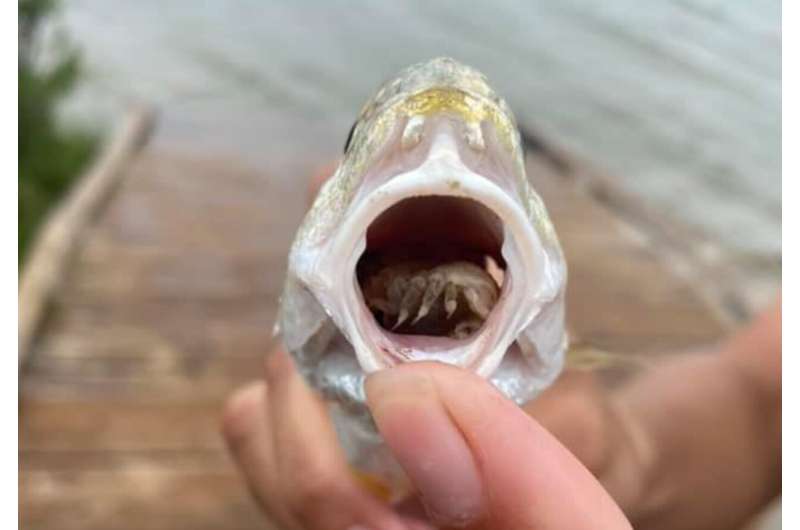October 26, 2021 report
Parasite that replaces a fish's tongue caught at Texas state park

An unknown person working at Galveston Island Sate Park, Texas Parks and Wildlife, has posted a picture of a unique fish that was caught at the park on Facebook—it has no natural tongue. Instead, it has a tongue made up of a group of parasites known as a tongue-eating louse. In the picture, the fish is held up to the camera with its mouth wide open showing the strange foreign 'tongue' inside.
An official with Coastal Fisheries, Mark Fisher, told members of the press that the parasite is not as rare as it might seem, noting that it is quite common in some less well-known species, such as the spotted seatrout or the red drum that lives off the coast of Texas. The fish in the picture is an Atlantic croaker. He further explains that the parasite is an isopod crustacean that is related to the pill bug, (aka rolly pollys) found in many yards across America.
It makes its way into the fish's mouth through its gills—only the female replaces the tongue, while the males remain in the gills. He also notes that until now, he had never seen it in an Atlantic croaker. He adds that the louse is the only known parasite to completely replace an organ in another creature. Oddly, the new tongue does not seem to harm the fish, or the people who may catch it, though it is not known what would happen if a person were to eat the parasitic tongue. Fisher notes that not enough research has been done on the parasite to understand how it pulls off such a feat. Prior research has shown that the parasite does not survive by eating the food taken in by the fish but instead consumes the mucus that forms on the inside of the fish's mouth.
Social media has caught wind of the picture posted by the park official, leading to memes and other stories of interest because of the scary look of the parasitic tongue—it has eyes on it. Indeed, the park official who posted the picture initially described it as a Martian. Others have described it in more monstrous tones.
Detailed information about the parasite was published in the International Journal for Parasitology: Parasites and Wildlife in 2014.
More information: Galveston Island State Park - Texas Parks and Wildlife: www.facebook.com/GalvestonIsla … ts/10158143851271610
Nico J. Smit et al, Global diversity of fish parasitic isopod crustaceans of the family Cymothoidae, International Journal for Parasitology: Parasites and Wildlife (2014). DOI: 10.1016/j.ijppaw.2014.03.004
© 2021 Science X Network



















